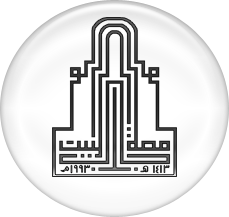| DC Field | Value | Language |
|---|
| dc.contributor.author | د. محمدصبري نصار الجندي | - |
| dc.date.accessioned | 2015-04-08T12:33:39Z | - |
| dc.date.available | 2015-04-08T12:33:39Z | - |
| dc.date.issued | 2008-08-21 | - |
| dc.identifier.uri | http://hdl.handle.net/123456789/205 | - |
| dc.description.abstract | الملخص
لم تحظ فكرة الحلول العيني في الفقه العربي، وعلى خلاف الحال في الفقه الفرنسي، بالاهتمام الذي تستحق، ففي حين خصص شراح فرنسيون كبار، قدامى ومحدثون، نظرهم صوب هذه الفكرة لاستجلاء مضامينها ونطاقها، فإن الفقه العربي لم يعرض، باستثناء حالات جدّ نادرة، للفكرة إلا لماماً وفي مباحث تخص عموماً الملكية أو الحقوق العينية التبعية. فهل يرجع ذلك التغاضي عن بحث الفكرة إلى انصراف المشرعين العرب عن الأخذ بها وإعمالها؟ الواقع أنه إذا كان إعمال الفكرة قد أخذ مدى أوسع بكثير في التشريعات الفرنسية، إلا أن المشرعين العرب، ومنهم مشرّعي الأردن والإمارات العربية، قد تبنوا الفكرة في نصوص عديدة-بل كثيرة. إن التغاضي عن بحث الفكرة، في الفقه العربي، يرجع، في رأينا، إلى تعذر الوقوف على المراجع التي تصدت لها وتوسعت في بحثها، خصوصاً وأن بعض أهم تلك المراجع يعود إلى سنين طويلة سابقة، تزامن بعضها مع بدايات القرنين المنصرمين... هذا من ناحية، ومن ناحية أخرى، فإن السعي لوضع ضوابط لإعمال الفكرة وبيان مدى إمكان الأخذ بها، لا زال مثار أخذ ورد حتى في الفقه الفرنسي. أما الفقه الألماني، الذي تبدو فيه الفكرة مستقرة ومحددة المعالم، فإنه لا يحظى في العالم العربي، ولصعوبات تتعلق باللغة وبالتكوين الأكاديمي، بمتابعة واسعة. فما هذه الفكرة، وما مداها؟ الحلول العيني، باختصار، وسيلة يقصد بها المحافظة على الحقوق من خلال السماح باستبدال مال بمال آخر، وبحيث يخضع المال البديل لما كان يخضع له المال المبدل من قواعد وأحكام. وخضوع المال البديل للنظام القانوني للمال المبدّل، إذ يحافظ على حقوق هؤلاء الذين انصبت حقوقهم على المال المبدل قبل وقوع الاستبدال، إنما يعرّض بالمقابل الحقوق التي اكتسبت على هذا المال بعد الاستبدال، والحقوق التي كانت قائمة على مال البدل، لمخاطر واضحة... فأين هي نقطة التوازن التي يجب الوقوف عندها؟ هذا ما سنسعى إلى تحصيله بعد مناقشة مضمون الفكرة وآثار إعمالها.
Abstract
The notion of the "Real subrogation" didnt meet a vast interest in the Arab legal thinking. In contrast of the French legal thinkers, who accorded to the idea and since long time ago, a vast and some times a thorough treatment, the Arab thinkers have, except some very rare cases, limited them-selves to general approaches? inserted commonly in their discussions about the "Property" and the "Subordinate Real Rights". This meager interest given to the notion, comes, in our judgment, from the difficulty to accede to the references dealing with the notion: some of these references go back to the beginning of the last two centuries. Adding to that, the still slippery nature of the notion of the "Real Subrogation". What, then, is this notion, and to what it refers and what are its limits of application ? Succinctly, the "Real Subrogation" is a means to safeguard the rights and prerogatives carrying upon an asset through its substitution by another asset. This operation, while protecting the rights existing on the ancient asset before the substitution, jeopordises the other rights which were created on that same asset after the substitution, as well as the rights related to the substitutive asset. How, then, determing the point of equilibrium and to what extent should we put the Notion in application? That is what we intend to find out through this study | en_US |
| dc.title | نظرة على قواعد الحلول العيني دراسة موازنة بين الفقه الغربي - والقانون المدني الاردني وقانون المعاملات المدنية لدولة الإمارات | en_US |
| dc.type | Other | en_US |
| Appears in Collections: | ابحاث المجلد 5 العدد 3
|

